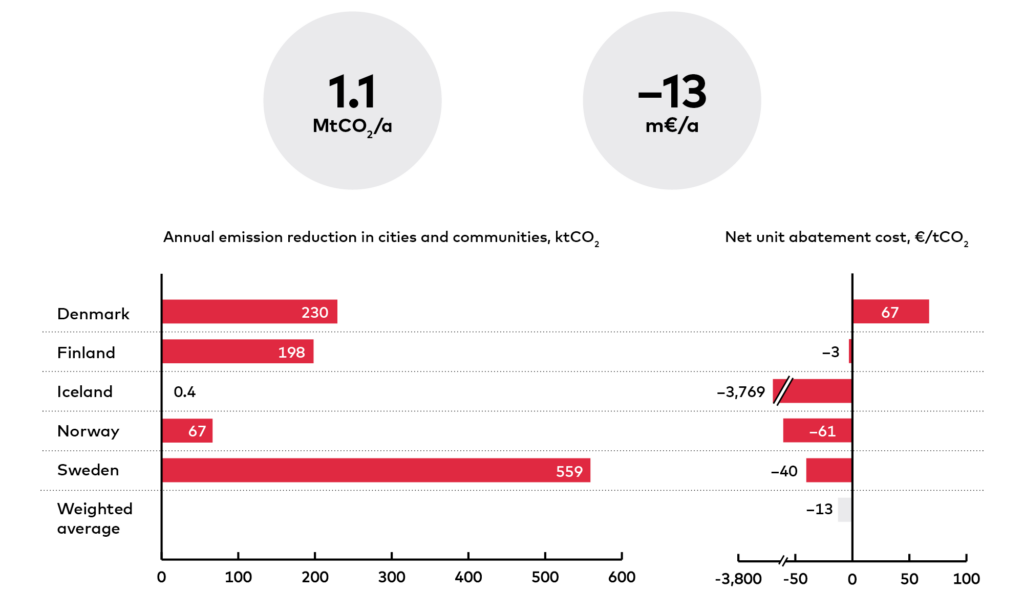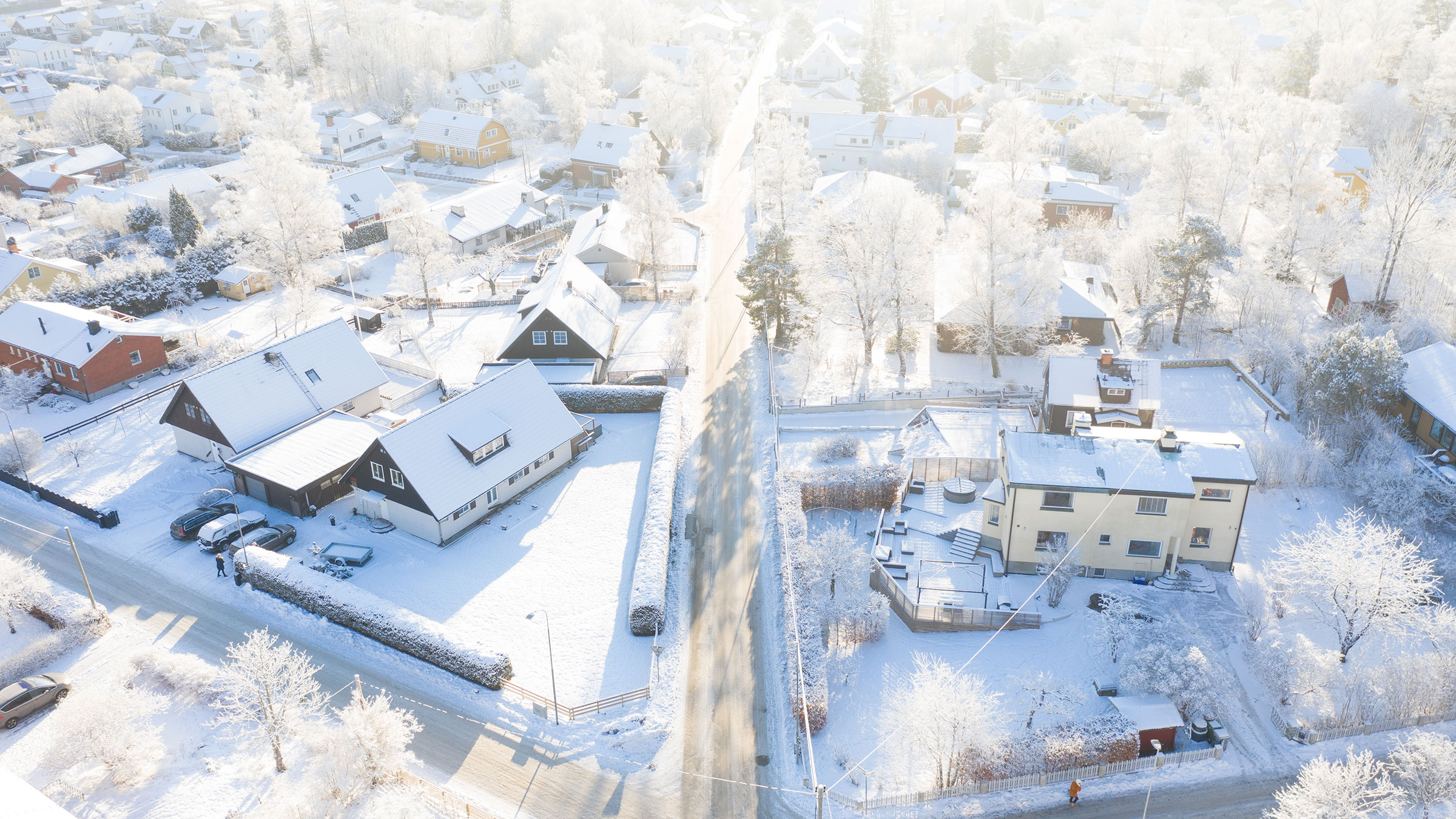Climate impact
Mäntsälä made a deal to utilise the waste heat from a 15 MW data centre established by a large search engine company. In the past, Mäntsälä primarily used natural gas to produce district heating, but wanted to look for cheaper options. After investments in heat recovery equipment and a heat pump plant, a third of the energy used by the data centre can be captured as heat. In 2018, 20 GWh or 54% of Mäntsälä’s heat needs were covered by the waste heat from the data centre.
If the excess heat from a data centre is treated as a waste that has no emissions related to it, the climate impact depends solely on the emissions from the electricity used by the heat pumps and the heat generation replaced.
By 2025, new data centres requiring over 2,500 MW of electric power are expected to be located in the Nordic countries. If this heat was to be utilised in district heating, we estimate that it could replace 3.2 TWh of fossil heat production and reduce emissions by 1.1 MtCO2.
Costs and savings
The costs of waste heat utilisation consist of the heat recovery system, the heat pump plant, the price for heat and electricity used by the pumps and a possible extension to the district heat network. As heat pumps often do not fully replace a heat or cogeneration plant in the district heating network, we compare the heat pump cost to the variable cost of thermal plants. We estimate the weighted average abatement cost in the Nordics to be –13 €/tCO2. The cost varies between the Nordic countries as a result of the differing taxes applied to heat pump electricity.
Mäntsälä has been able to reduce their district heating prices by 11% with this solution.

Other benefits
Replacing fuel combustion with heat pumps cuts air pollution. It also reduces the need to import fossil fuels and increases energy security. Heat pumps can be used to provide flexibility to the energy system.
The ability to utilise the waste heat and compensate the data centre for it improves the business case and can be a decisive factor in the decision to locate a data centre, which can increase local investment and employment.
Barriers
- There may be local opposition to the data centres, which use large amounts of power.
- There is some uncertainty about how long a data centre will be in operation and what the price of the heat will be.
- The price of the heat, and also electricity, are crucial to the economics of the solution.
- The heat source needs to be located close to the heat users so that the investment in the extended pipe infrastructure and heat losses do not become too large.
- Waste heat recovery also requires changes and investment in the facility generating waste heat.
- The initial investment for the heat pump facility is often large, and therefore the heat pumps require a sufficient number of load hours to keep the price of the heat down. In some networks this may be restricted by the existing heat production system.
- The required district heating water temperature in winter may be higher than can be provided by heat pumps and the heat requires priming. If this cannot be done with existing facilities, it can become expensive.
Enablers
- As long as the operations last, a data centre is a stable source of heat.
- The heat recovery systems are easier to implement in new construction projects.
- Selling the waste heat provides additional income to the data centre. If the heat is affordably priced, the waste heat capture can be a win-win solution.
- Enough use hours, relatively inexpensive electricity and high fossil fuel taxes make heat pumps profitable.
- Low network temperature allows the heat to be used without priming.
- In Mäntsälä, zoning the industrial plots close to the district heating network enabled the waste heat use.
































RELATED SOLUTIONS